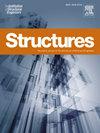Comparative analysis of GFRP and CFRP bars for marine concrete: Insights into influence on the bond performance
Abstract
Fibre-reinforced polymer (FRP) bars are usually manufactured with diverse surface configurations to increase their bond to surrounding matrix. The bond performance is highly dependent on many factors such as the fibre type, surface configuration and environmental conditions. In this research, the bond performance of glass and carbon FRP bars were comparatively analysed to estimate their potentials in marine concrete, with the aim of mechanical and economic considerations. Influences from the w/c ratio change and harmful seawater solutes of Cl- and SO42- were explored. Impact of the revealed bond interface failure modes on the concrete member strength was examined via three-point bending test using beams with FRP bars as the flexural reinforcement. GFRP bars were measured to achieve an ultimate bond stress ∼4 times higher than CFRP bars, induced from their bond interface failure difference that occurred at the surface-rib-to-concrete for GFRP bars and at the surface-coating-to-interior-FRP for CFRP bars. The reduced w/c ratio increased the bond stress of CFRP bars while the accelerated chloride and sulfate exposures mainly reduced the initial bond stress of GFRP bars. Generally, the interface bond failure that happened at the surface-rib-to-concrete by GFRP bars exhibited better strength development and reinforcing effectiveness than that at the interior-FRP-to-coating for CFRP bars. This research concluded by estimating factors that manifested the bond performance and reinforcing effectiveness difference between tested GFRP and CFRP bars. These factors combined results from the pull-out and three-point bending tests, providing a more holistic approach to compare the FRP bar interface bond performance.

 求助内容:
求助内容: 应助结果提醒方式:
应助结果提醒方式:


